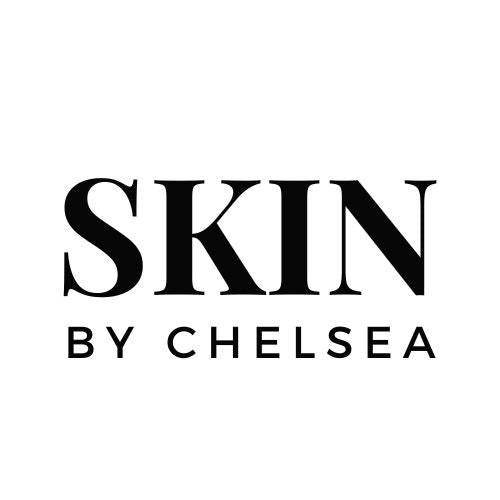We're here to debunk the mysteries of skincare and help you navigate through the plethora of cleansers available in the market.
1st step cleansers TO REMOVE the makeup, sunscreen, pollution, sweat, dirt and other shit off your face.
Best when applied to the skin and then removed with a damp cloth.
Micellar Water: This will not clean your face, but it will give it a good wipe without the need for water. Take this to your festival or camping trip if you need something where there is no running water.
Micelles are tiny aggregates of surfactant molecules suspended in water. These micelles attract dirt, oil, and makeup, effectively cleansing the skin without the need for rinsing. Ideal for make up or armpit wipes. The modern-day sponge bath if you will.
A Common Ingredients found in Micellar water is Poloxamer 184: a nonionic surfactant and emulsifier and has the ability to form micelles.
Oil Cleanser: Suitable for all skin types, including acne-prone skin, as they do not strip the skin's natural oils and can help balance sebum production.
Use the principle of "like dissolves like '' to remove makeup and other oil-based impurities. The cleansing oils bind to the skin's oils and emulsify when water is added, allowing them to be rinsed away. Common Ingredients in these products are: Non-polar oils such as jojoba oil, olive oil, sunflower seed oil
Cleansing Balm: Ideal for all skin types, particularly effective for dry and sensitive skin due to their nourishing and hydrating properties.
Solid or semi-solid formulations that melt into an oil upon application with the warmth of skin. They emulsify with water, transforming into a milky consistency that cleans the skin. Common Ingredients in these products are ones that are heat sensitive such as coconut oil, sweet almond oil, beeswax and candelilla wax.
Cleansers to ACTUALLY clean your skin.
Best applied after a 1st cleanser and can be washed off with just water.
Clay Cleanser: Best for oily skin types due to their oil-absorbing properties. They can be too drying for dry or sensitive skin. Minerals that absorb excess oil from the skin's surface work by binding to sebum which are then rinsed away with water.
A common clay used in these cleansers is Kaolin Clay: a hydrated aluminium silicate. It is one of the most common minerals in the world and is mined in many countries but dominantly sourced from China. It has been used for centuries in various applications, ranging from paper making, ceramics, pottery to cosmetics and skincare, even internal medicinal purposes for detoxifying properties promoting healing.
Gel Cleanser: Targeted for oily and acne-prone skin types due to their deep-cleansing properties. They contain surfactants which emulsify sebum, dirt, and impurities, allowing them to be rinsed away with water.
The most common Ingredients found in gel cleansers is Sodium Lauryl Sulfate (SLS), this is detergent, and this shit is in everything. It's in your toothpaste to dishwashing liquid to your car engine degreaser. It's used to create the thick lather when you are massaging a gel cleanser into your face and it's a known carcinogen.
Foam Cleanser: Suitable for combination skin types, simply working by generating a foamy lather when dispensed or applied. The foam is created by the inclusion of surfactants that trap air, creating bubbles that help lift and remove dirt and oil from the skin’s surface. Most foam cleansers will be packaged in an air filling pump to cream the foam.
A common Foaming agent found in these cleansers is Cocamidopropyl Betaine: a surfactant, cleansing agent and conditioner consisting of a fatty acid derived from coconut oil (cocamide) Considered to be milder than many other surfactants, reducing the risk of irritation. You'll find this surfactant to be more commonly targeted on baby safe cleaning products. Not all surfactants are evil.
Cream Cleanser: Best for dry and sensitive skin types, as they cleanse gently and maintain skin hydration. A thicker, lotion-like consistency and are typically formulated with the pairing of emollients and surfactants. They cleanse the skin while providing moisture, making them less likely to strip natural oils.
A common emollient found in cream cleansers is Cetyl alcohol: a fatty alcohol derived from sources such as coconut or palm oil, although it can also be produced synthetically. It allows oil and water-based ingredients to mix together forming a lotion or cream, making a protective barrier for the skin to prevent moisture loss and keep the skin hydrated.
Exfoliating Cleanser: Ideal for skins whose cell renewal rate is slowing down or trapping congestion under the skin. Frequency of use should be moderated to avoid irritation, especially for sensitive skin. There are two main forms these come in Physical and Chemical.
Physical exfoliation removes dead skin cells through friction and can use ingredients such as rice powder or ground apricot kernel to treat skin texture making you feel smooth.
Chemical exfoliants dissolve the bonds between dead cells and uses ingredients such as Alpha Hydroxy Acids like Glycolic acid to treat pigmentation in the epidermal layers of the skin or Beta Hydroxy Acids like Salicylic acid to treat cystic acne deeper in the dermal layers of the skin.
Your guide to choosing the right cleanser for your skin, starts with asking yourself how your skin feels to begin with. What is it asking for?
A detox? Deep clean? Something softer? Something hydrating? Or dead skin needing a boost to be shredded off?
Always listen to what your skin needs and treat it with the care it deserves.
Getting to know ingredients that work best for your skin is the exact same as getting to know food nutrition that works best for you.
Read the label. Know what you are putting into your body. Make sure you're not starting your skin care routine with repackaged carcinogenic dishwashing liquid.

